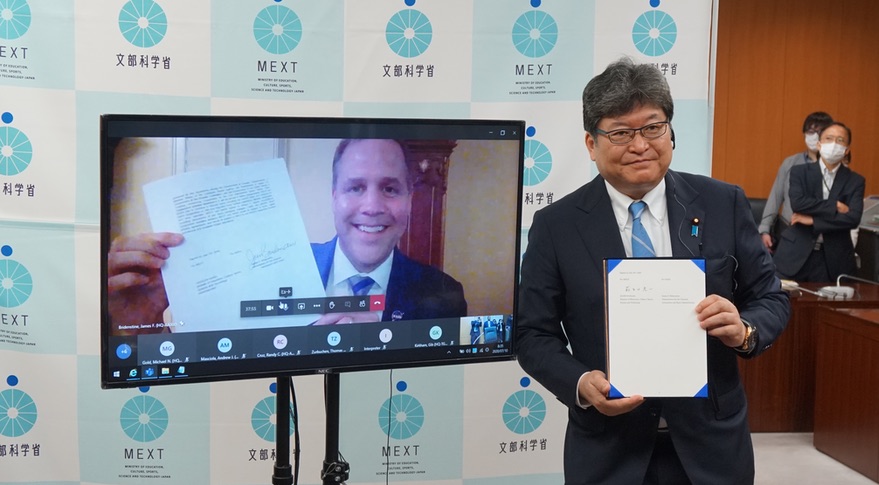WASHINGTON — NASA has signed an agreement with the Japanese government that brings the agencies closer to finalizing Japan’s roles in the Artemis program.
The agreement, called a Joint Exploration Declaration of Intent, was signed late July 9 in a virtual meeting between NASA Administrator Jim Bridenstine, in the United States, and Koichi Hagiuda, Minister of Education, Culture, Sports, Science and Technology in the Japanese government, in Japan.
“Today’s signing of this declaration of intent builds on the long history of successful cooperation between the U.S. and Japan in space,” Bridenstine said in a brief statement about the agreement. “We appreciate Japan’s strong support for Artemis and look forward to extending the robust partnership that we have enjoyed on the International Space Station to cislunar space, the lunar surface, and beyond.”
Neither government released the text of the declaration, but they described the document as outlining roles for Japan in both human and robotic exploration. That would include contributions to the lunar Gateway and lunar surface exploration.
Japanese officials said early this year that they expected to have a memorandum of understanding in place with NASA by the spring regarding contributions to Artemis. Yoshikazu Shoji, director of the international relations and research department at the Japanese space agency JAXA, said in January that Japan was interested in providing components like batteries and tanks for Gateway modules, data about the lunar surface and Gateway logistics using its new HTV-X cargo spacecraft.
In the long term, both JAXA and Japanese industry have proposed developing a pressurized rover for later human missions, something that NASA has welcomed. “It’s like a space station habitat, holding two people for 14 days, but it’s on wheels” said Mark Kirasich, acting director of the Advanced Exploration Systems division at NASA and previously NASA program manager for Orion, during a session of the NASA Exploration Science Forum July 10. “It’s like an RV for the moon.”
He said NASA considered it important to involve JAXA in a “major surface element” like a pressurized rover, even though NASA had already been doing studies of a pressurized lunar rover. “There was the idea that, even though we have done a lot of work, let the Japanese lead development of a pressurized rover,” he said.
NASA will still develop an unpressurized rover, like that used on the last three Apollo missions, for earlier Artemis missions. The Japanese pressurized rover likely won’t be ready until the end of the decade. Kirasich said NASA would hold an acquisition strategy meeting this week to create a program office for that rover and plan the acquisition of the rover from industry. The goal is to have that rover on the moon in 2025, delivered by a robotic lander through NASA’s Commercial Lunar Payload Services program.
